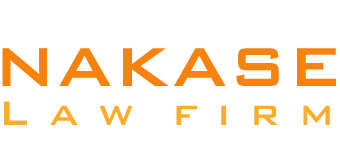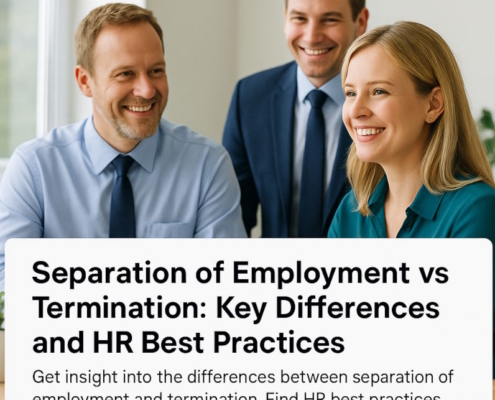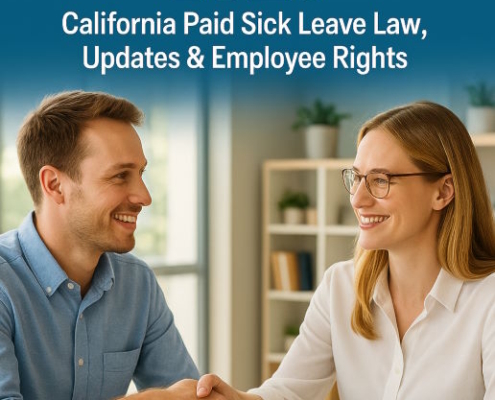Introduction
Your workers’ thirty-minute meal breaks are about to begin. Although you free them of their job responsibilities, they must remain on the premises during the break. Because you are ignorant of California’s meal penalty regulations, you do not pay your employees for the food breaks. When an employee files suit against you two years afterwards, the court mandates that you pay the fine.
This hypothetical situation may easily turn into an expensive reality for companies that fail to comprehend or comply with California’s intricate meal break regulations.
The cost of breaking California’s meal break regulations, industry-specific issues, and frequent misunderstandings will all be covered in this guide.
How do California meal breaks operate?
Section 512 of the California Labor Code and IWC Orders state that:
If your staff members work more than five hours throughout their shift, they have the right to a minimum 30-minute meal break. At the conclusion of the fifth hour of labor, this break ought to be given.
If a worker works more than ten hours a day, they ought to be granted an additional thirty-minute meal break. By the end of the tenth hour of work, you ought to schedule this second break.
Industry-specific limitations
Although all non-exempt employees are subject to meal and rest break restrictions, workers in specific industries may find it challenging to follow both state and federal break laws.
1. Healthcare
The freedom to go off-site throughout work hours could be subject to small limits for healthcare workers regulated by IWC Rules 4 and 5. Employees find it difficult to take a complete 30-minute break due to the demands of patient care, which results in missed or abbreviated breaks.
2. Workers in the Field
When it comes to taking food breaks, field personnel may face real difficulties. They include construction crews, salespeople, and agricultural laborers. They may have a demanding nature of the job. When it is combined with working in distant locations without designated break spots, it can make it challenging for field staff to adhere to break regulations.
3. Transportation/Trucking
Both federal & state laws dealing with breaks apply to drivers. Compliant meal breaks might be difficult to take because of delivery timetables, hours-of-service regulations, and the requirement to stay available.
The following professions and industries have collective bargaining contracts that supersede the California meal break legislation:
- Security officers
- Construction
- Film industry/ Motion picture
- Gas or electrical companies
Meal breaks that are off-duty versus on-duty
“Off-duty” breaks for food are required by California law. It means that workers must be fully released from all work responsibilities during these periods. Employees should be allowed to do as they choose during this period and not be under employer observation.
However, “on-duty” lunch breaks are allowed when an employee’s job requires them to be on duty at all times. Before using their allotted break, workers who are having “on-duty” meal breaks must sign a formal agreement with their employer. Remember that the worker may withdraw their consent to remain “on-duty” at any moment by writing.
Adhering to California’s meal break regulations
The California Supreme Court ruled in Brinker Restaurant Corporation v. Superior Court that the employer must release the worker from all work-related responsibilities and give up authority over what they do at mealtimes.
Encouraging your staff to abide by California’s break requirements is essential as an employer. You will be liable for paying your employees for missing breaks if they work throughout their 30-minute food break (irrespective of whether you knowingly or unknowingly allow it).
Make sure that your workers are taking their needed breaks. It is the most effective way to avoid paying them more than you should. The following tactics will assist you in monitoring and controlling the breaks taken by your staff.
- Establish a clear policy for workplace breaks.
- Include breaks in your everyday routine.
- Employ a system that tracks breaks automatically.
- Make it mandatory for workers to confirm that they utilized their daily breaks.
With an approved meal waiver, you can permit your staff to lawfully work during their breaks.
California Meal Waiver: What is it?
When a worker and their manager agree to keep working through their meal break, this is known as a California meal waiver. Waivers are acceptable in the following circumstances.
- If a worker works a shift of six hours or less, they are eligible to skip the first meal break.
- If the worker’s shift is no longer than 12 hours, the next food break can be skipped.
- It is not possible to skip both meal breaks within a single shift.
- The employee may withdraw the waiver by letter at any time, and it has to be in writing.
Due Meal Penalties
The meal break penalty in California, sometimes referred to as meal payment, is a financial fine that companies are required to give their workers when they neglect to offer legally required meal breaks. Each missed or abbreviated meal break is worth one hour of the worker’s regular rate of pay. In addition to the earnings the worker would have received during their break, the fine is paid.
Only when you break California’s meal laws will you be subject to the meal break punishment.
You most likely owe your staff members extra wages for break infractions if you engage in any of the following behaviors.
- Don’t allow meal breaks at all.
- Don’t let lunch breaks last more than half an hour.
- Require workers to remain on the premises without getting their permission.
- Allow workers to work during their food break with knowledge.
- Without both parties’ approval, skip the meal break.
- Put pressure on workers to skip meal breaks (for instance, by enforcing a rigorous schedule that conflicts with workers’ lunch breaks).
- To entice workers to work throughout their meal break, provide incentives.
- You disregard the employee’s revocation of the waiver agreement.
- Allow workers who put in over ten hours to skip the first & second breaks.
What is the California penalty pay amount?
The lunch premium pay, commonly known as the meal break penalty in California, is equal to a full hour of an employee’s usual rate of pay for each infraction. You may use the California Meal Penalty calculator to determine the possible expense of meal penalty reimbursement.
What is the actual compensation for meal penalties? Let us examine.
Twenty crew members were employed by a nearby construction company, and they were paid $25 an hour. Everyone is working together as their project deadline draws near. The general foreman determines that requiring the entire workforce to remain on-site during the meal break is beneficial for the business. The business could now face a significant fine for breaking the law with this decision.
To what extent is the penalty?
Let’s figure it out.
We must first ascertain how many breaks for meals the employees should have had throughout the course of the 12-week period if the procedure went on for three months.
The employees take a single meal break each day during a five-day workweek.
Sixty meal breaks during three months is equal to five breaks each week times twelve weeks.
The lunch penalty payment for every worker will then need to be determined based on the number of missed breaks.
$1500 in penalty compensation per employee (60 skipped meal breaks x twenty-five dollars per hour).
Lastly, we will figure out how much meal break penalty in California the entire crew will receive.
Twenty crew members times $1500 penalty money is $30000 in total meal penalty compensation.
The procedure for compensation
To be eligible for a meal break penalty in California, employees do not need to go through the legal process. A solution that is out-of-court and friendly has the potential to help you reach a consensus. But if you can’t come to an out-of-court deal, going to court might be your best bet.
The worker may also decide to go to court. First, they are asked to submit a claim to the Division of Labor Standards Enforcement within three years of the claimed infraction. The worker must provide documentation of the dates and times of the infraction as well as any other relevant documentation, including:
- Voicemails, emails, or texts
- Audio or video recordings
- Statements from witnesses
- Memoranda from the company
It is your responsibility to pay the meal break penalty in California if the court finds that you broke the rules in any way.
In addition, you might have to pay the worker for emotional anguish, punitive damages, and, if necessary, legal fees.
The price of discrimination and retaliation
An employee may file a retaliation and discrimination case with the labor commissioner’s office if they are subjected to discrimination or retaliation because they filed a lawsuit or demanded compensation. Sections 98.6 and 230 of the California Labor Code indicate that you will be subject to legal action if the governing bodies establish that there was retaliation and discrimination.
Threatening the worker, firing them, or unjustly reducing their pay are a few examples of discrimination and retribution.
Typical assumptions and compliance pitfalls
- Mealtimes that are “on-duty” are always acceptable.Not true. Only in extremely restricted situations are on-duty lunch breaks permitted, and a formal employer-employee agreement is needed.
- Workers are free to forego their food breaks.Not true. Waivers must be documented and are only enforceable under certain circumstances. Workers have the right to withdraw their consent at any moment.
- It is sufficient to provide the meal break.Not true. In addition to offering lunch breaks, employers must make sure that workers are released from all work-related responsibilities and actively discourage work from taking place during these times.
FAQs
1. What is California’s meal penalty?
For every meal break that is entirely skipped or cut short, an employee in California is subject to a meal penalty, which is a financial penalty equivalent to one hour of their usual pay rate. Employees might receive compensation for missing break time through this legal remedy.
2. When must we take breaks for meals?
For non-exempt workers who put in over five hours in a workday, meal breaks are mandatory. Those working more than ten hours must take a second food break.
3. Is it possible to evade the meal break penalty in California?
The meal break penalty in California is a legal requirement for the company when breaks are not given; thus, you are unable to waive it. A formal agreement may, however, allow employees to forego their meal break under certain circumstances.
4. At what point is penalty pay due?
The employee’s regular salary during the period of pay in which the infraction occurred should ideally be paid with the meal penalty compensation as soon as possible. Penalties for unpaid meals may lead to further sanctions and judicial action.
5. When it comes to infractions of lunch breaks, what’s the statute of limitations?
In California, infractions of meal breaks often have a three-year statute of limitations.
Conclusion
Meal break rules in California aren’t just red tape. They’re there so people can actually step away from work. The problem is, many employers cut corners or think a quick lunch at the desk is fine, and that’s where the fines pile up. What seems like a small miss now can blow up years later into back pay and penalties. The easiest way out is the most obvious. Let people take their breaks and don’t complicate it. In the long run, it saves money. It will also keep staff happier and avoid messy disputes that no business owner wants.































